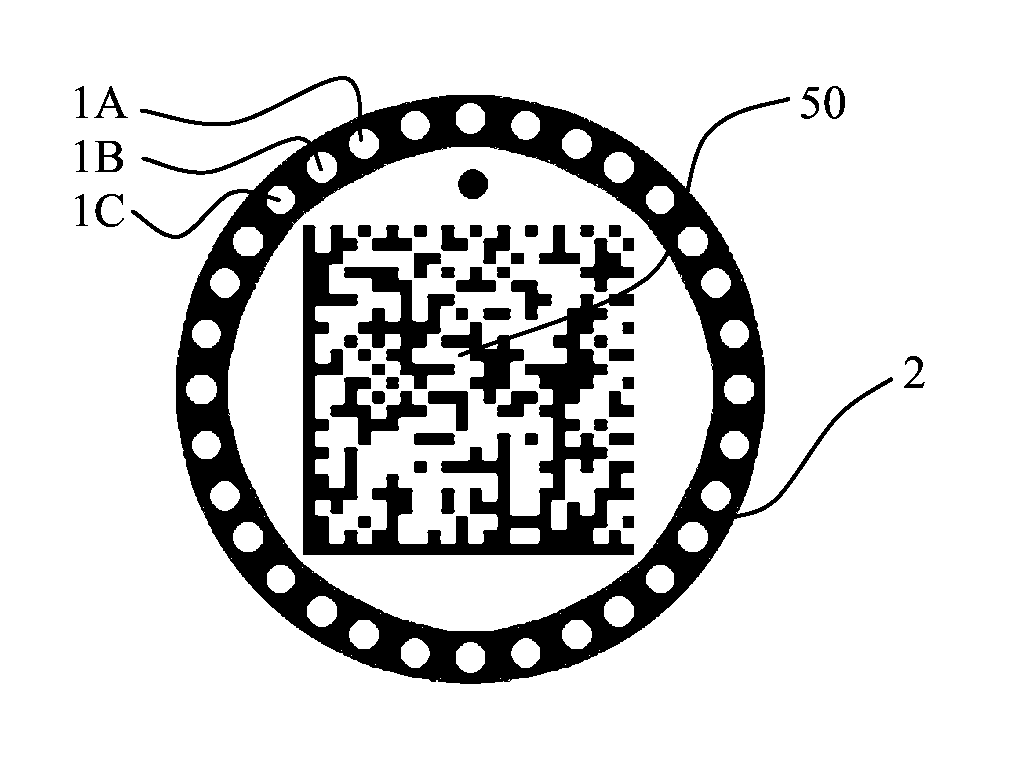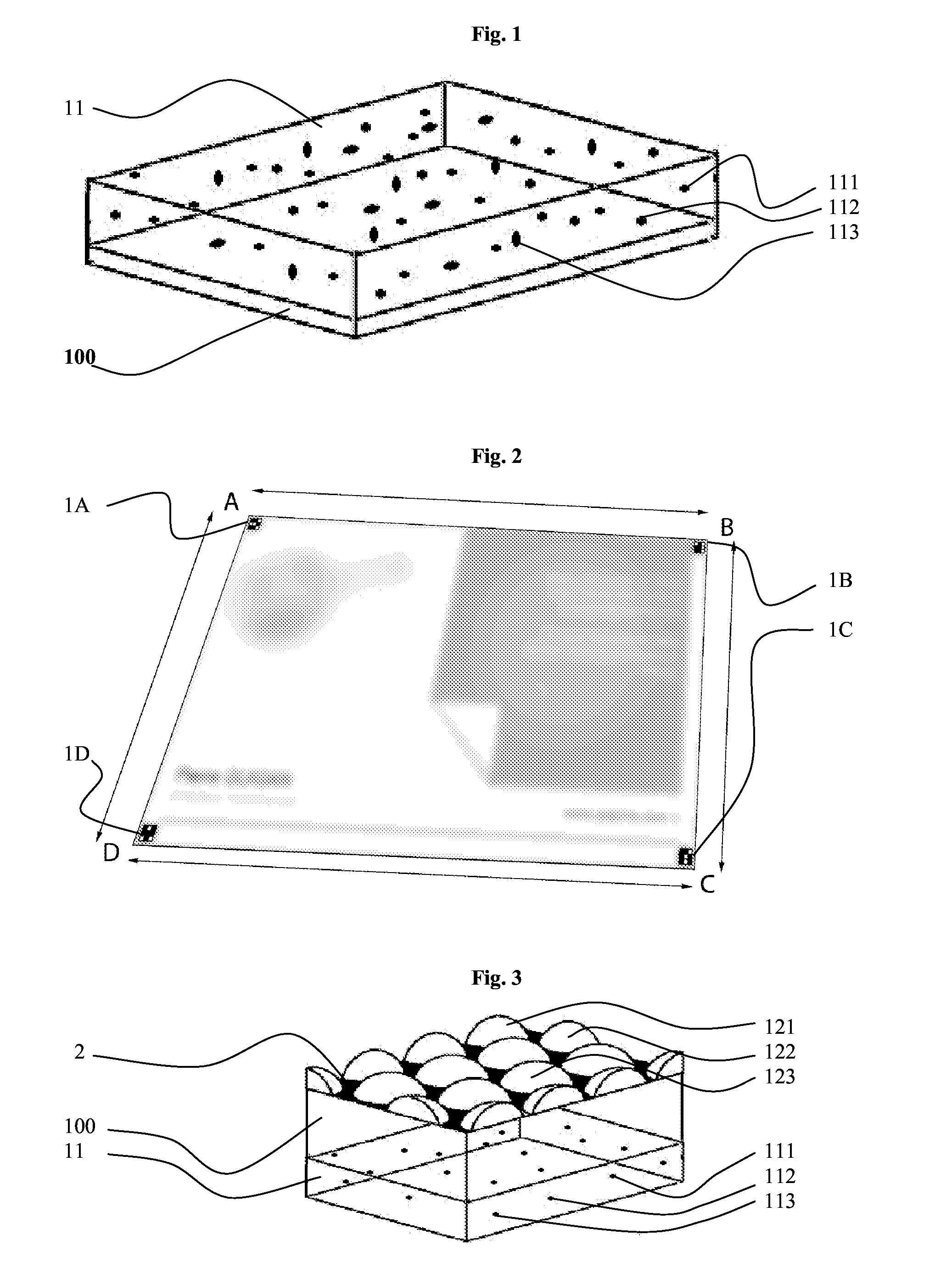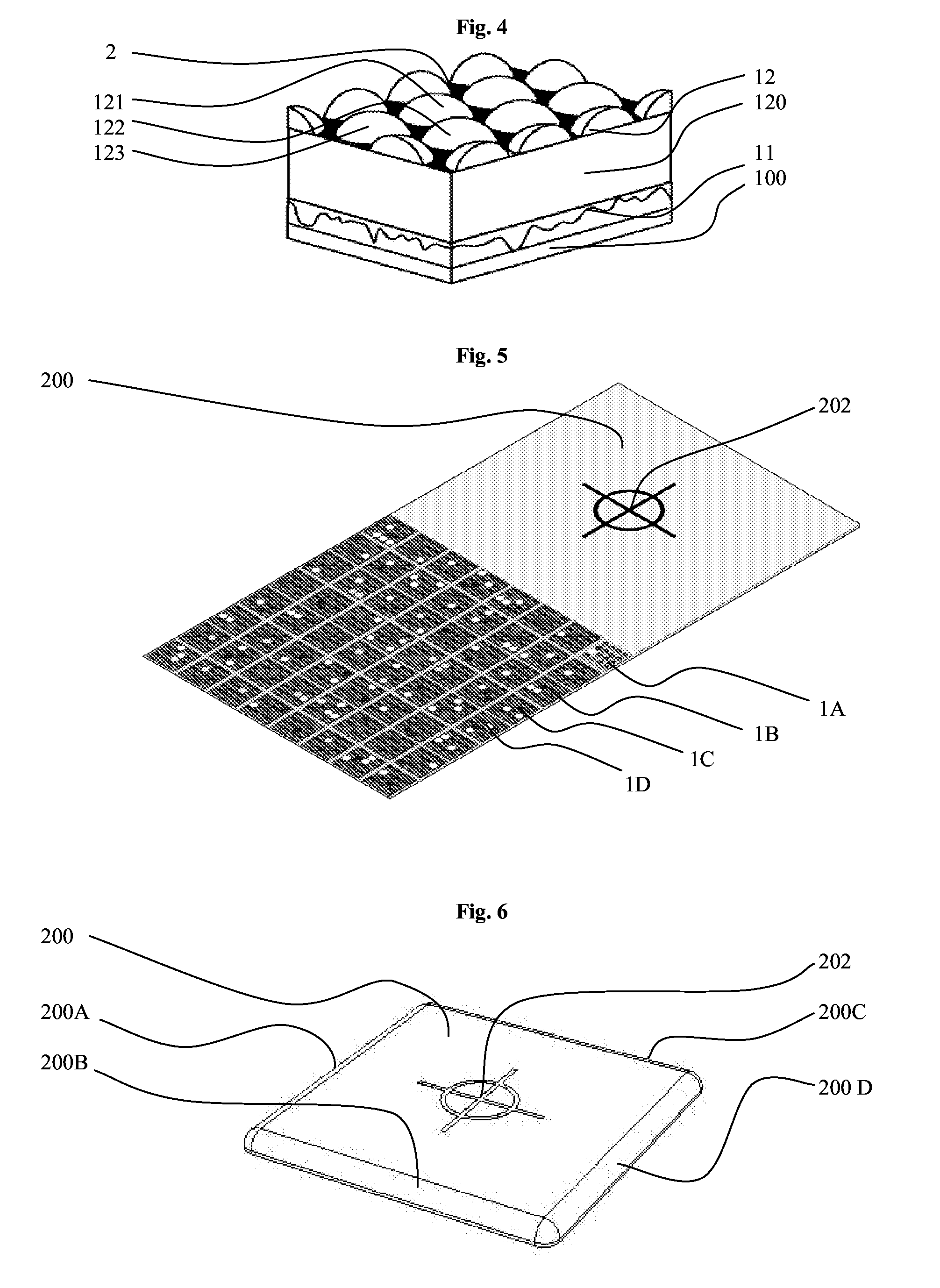Security barcode
a barcode and security technology, applied in the field of authentication methods, can solve the problems of counterfeiting progress, unresolved, complex and specific scanning methods,
- Summary
- Abstract
- Description
- Claims
- Application Information
AI Technical Summary
Benefits of technology
Problems solved by technology
Method used
Image
Examples
Embodiment Construction
The Principle
[0051]The principle of the present invention consists in authenticating an authentication device 1 by comparing a description of the device 1, which description is referred to as a “subsequent” description, with a description of the same device 1, which description is referred to as an “original” description. Each of the characteristics of the method operates in synergistic manner with the others in order to obtain authentication that is reliable.[0052]Said disrupters being grouped together in sub-entities 1A, 1B, et seq. referred to as “modules” that reflect light in perceptibly different ways depending on the viewpoint from which they are observed gives the device all of the advantages of barcodes: its description may be limited to describing each of the modules 1A, 1B, et seq. in binary form (a module is written 1 when it is pale and 0 when it is dark) or with only a few digits representing its brightness and / or its color.[0053]Determining the three-dimensional posit...
PUM
 Login to View More
Login to View More Abstract
Description
Claims
Application Information
 Login to View More
Login to View More - R&D
- Intellectual Property
- Life Sciences
- Materials
- Tech Scout
- Unparalleled Data Quality
- Higher Quality Content
- 60% Fewer Hallucinations
Browse by: Latest US Patents, China's latest patents, Technical Efficacy Thesaurus, Application Domain, Technology Topic, Popular Technical Reports.
© 2025 PatSnap. All rights reserved.Legal|Privacy policy|Modern Slavery Act Transparency Statement|Sitemap|About US| Contact US: help@patsnap.com



